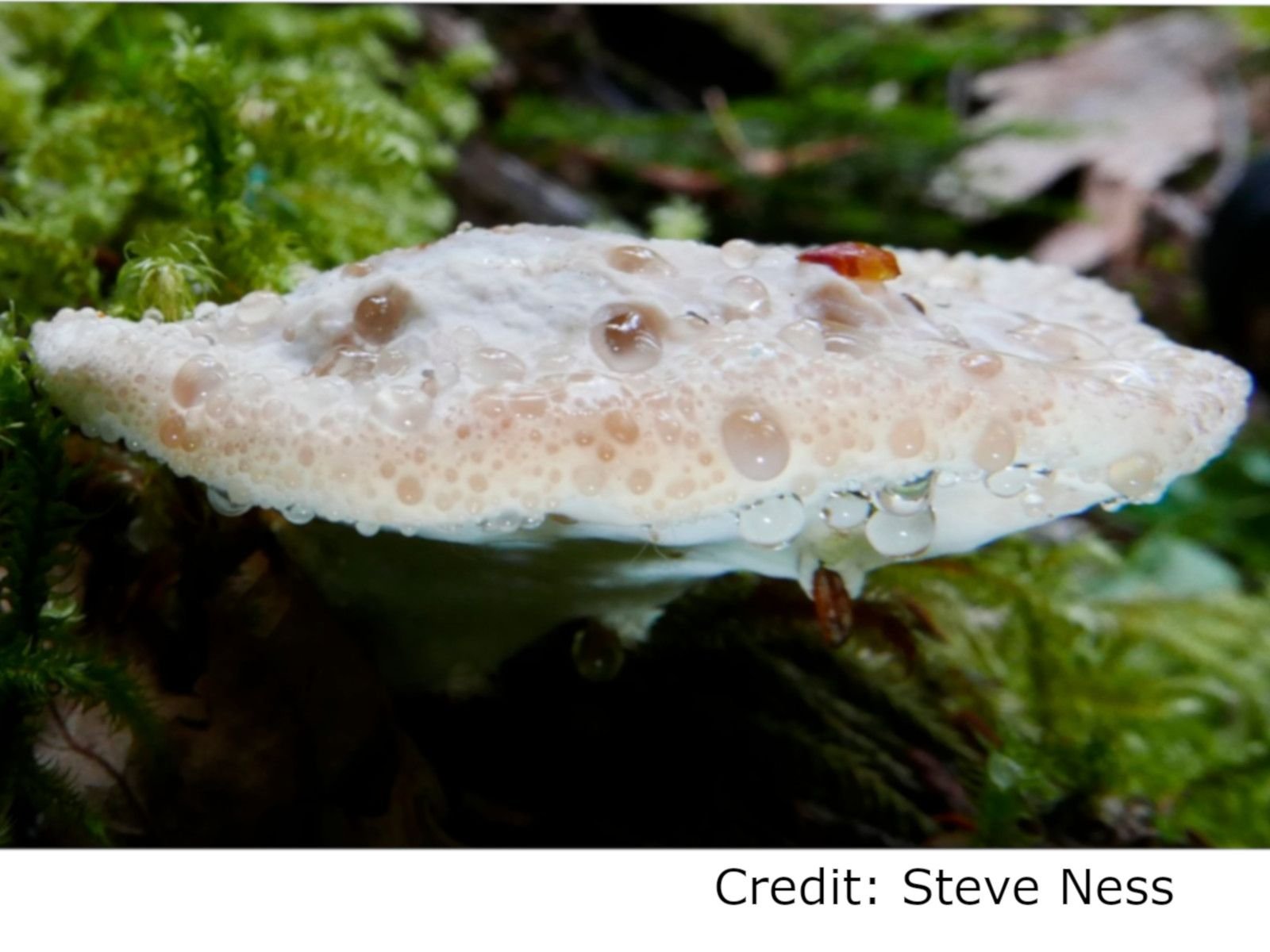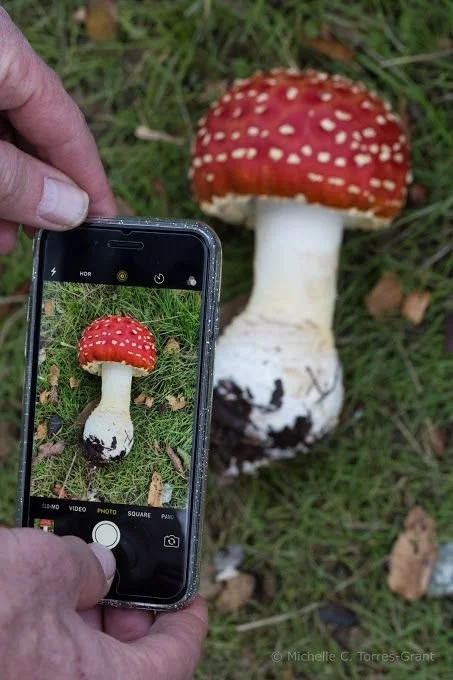Picturing the Kardashian Mushroom
If you don’t know who the Kardashians are, then you’re probably a happy mycologist who spends days and nights in the woods.
For the rest of us, the Kardashians are specimens of Homo sapiens who earn hundreds of millions of dollars
(Yep. Hundreds of millions) by being photographed. Poking about iNaturalist reveals fungi photos of varying quality, so let’s march down a quick list of how to shine as mushroom paparazzi:
Practice with the technology before setting out. Whether it’s a cell phone or a camera, take time to master close ups, flash settings and burst options.
Learn to brace before “shooting.” This may mean steadying an elbow on a log or using a finger or the wrist to anchor to the ground.
Think about base stability. A squatting photographer is perched over two feet (okay, some of these are large) but a kneeling photographer or a prone photographer has a bigger and more stable base. Preparing for base stability may mean tossing knee pads or a ground cloth into the daypack.
Consider adding a mini-tripod and remote-control camera clicker to your gear. This lets you stage the shot with the smart phone on a tripod and then use the Bluetooth clicker to take the picture. No more focus loss due to a finger pushing on the smart phone! Amazon.com carries an affordable pair made by Zodiac https://tinyurl.com/y4bqm7ul
Learn the power of “photo hygiene.” This is where a photographer learns to make the subject shine by attending to light, shadows, background, depth of field and visual clutter. Learn about the magic of photo hygiene here: http://www.cambyte.com/blog/hygiene-in-photography/
[Credit: Michelle C. Torres-Grant]
Take the glamor shots first. Capture the fungus in its natural setting (usually a side view) before handling the fungus to show gills or other attributes.
Take LOTS of pictures. The beauty of digital is that there’s no additional processing costs, so take pictures from the side, from ground level up, and from multiple vectors.
Share the camera or phone or ask for back up photos from others as other eyes may capture different details.
Take the Mycoflora data sheet photos last (This is the series of photos where the white Mycoflora data sheet is next to the fungus). The white of the data sheet can change how the color of the fungus appears in a photo. Also, if the fungus has now been well recorded in pictures, you may feel more comfortable laying a specimen alongside the data sheet to record height and under cap aspects.
Scroll through and review your collection of photos before you heave yourself to a standing position. This is a good time to find the surprises, which might be: a) Whoops, forgot to take a gill shot; b) Wow, a white fungus can look like a snowball with pores and striations disappearing; c) Huh? There’s another mushroom photobombing the mushroom that’s supposed to be star; and d) For Pete’s Sake. There’s an inch of index finger in each photo.
Most important of all is the BOC (Beverage of Choice) at home. Sip the BOC while reviewing the day’s photos. Celebrate the effort. Eventually one will also celebrate the results.


